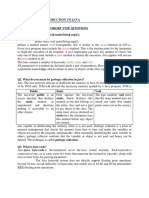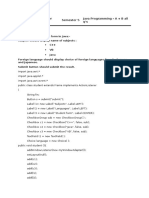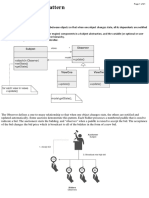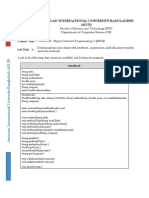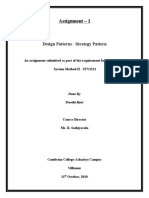0% found this document useful (0 votes)
18 views6 pagesJava Exam Answer Sheet
The document is a Java exam paper consisting of three groups of questions: very short answer type, short answer type, and long answer type. It covers various Java concepts such as memory management, object-oriented principles, exception handling, and GUI frameworks. The paper includes definitions, examples, and comparisons of key Java features and constructs.
Uploaded by
tuhinakhanam557Copyright
© © All Rights Reserved
We take content rights seriously. If you suspect this is your content, claim it here.
Available Formats
Download as PDF, TXT or read online on Scribd
0% found this document useful (0 votes)
18 views6 pagesJava Exam Answer Sheet
The document is a Java exam paper consisting of three groups of questions: very short answer type, short answer type, and long answer type. It covers various Java concepts such as memory management, object-oriented principles, exception handling, and GUI frameworks. The paper includes definitions, examples, and comparisons of key Java features and constructs.
Uploaded by
tuhinakhanam557Copyright
© © All Rights Reserved
We take content rights seriously. If you suspect this is your content, claim it here.
Available Formats
Download as PDF, TXT or read online on Scribd
/ 6





